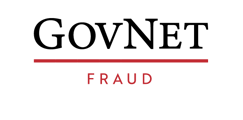Part of the The Government Counter Fraud Profession's main aims going forward is to improve diversity and inclusion within public sector counter fraud..
This was the topic of a panel session held at Counter Fraud 2021; a talk used to detail the importance of diversity and its benefits to the public sector in general and the counter fraud response.
This talk featured the following panel:
- Emma Altmann-Richer - Inclusion Lead at the Department for Work and Pensions
- David Whitehouse-Hayes - Head of Government Counter Fraud Professionalisation at the Cabinet Office
- Savio Patricio - Head of Post Event Assurance at the Cabinet Office
- Roger Burt - Head of Quality Assurance, Counter Fraud Directorate at the Department for Work and Pensions
- Laura Shaw - Head D&I Assurance and Engagement at the Cabinet Office
The session was chaired by David Whitehouse-Hayes, who began by citing data taken from a Harvard University study:
"Diversity unlocks innovation by creating an environment where people can think outside of a box.”
He went on to say that diversity needs to be present on every level so that with “A more diverse range of senior leaders, they also support those ideas so they get traction, and so the whole profession or business… can improve.”
Laura Shaw provided a wider perspective on diversity within government, directly mentioning issues such as the disproportionate impact of COVID-19.
“What we’re seeing now is a real drive and emphasis on that evidence-led, data-driven approach to diversity and inclusion. What is the data telling us? What’s working? And, more importantly, where we recognise that something isn’t [working], let’s not be afraid to stop that and think about what else could work,” she explained.
Shaw differentiates between performative work and outcome-based work, stating there’s an increased focus on the latter.
The talk continued with Emma Altmann-Richer explaining the differences between diversity and inclusion.
“When we talk about diversity, we’re really talking about the full range of human difference, so this could be related to a protected characteristic like age, gender, ethnicity, disability status, faith or belief, sexual orientation, gender identity or it could be something else such as our socioeconomic background,” she highlighted.
“Inclusion is really talking about how we ensure that we all feel valued and supported and it’s not about a division into characteristics, it’s about a holistic view of people, both in terms of intersectionality - recognising that one person’s experience from a certain characteristic will not be the same as another’s.”
As the talk progressed, Roger Burt spoke on the challenge of delivering both diversity and inclusion. “It’s one thing to offer the promise of diversity and inclusion, but actually delivering on it is another challenge in itself.”
“To be a truly inclusive organisation, everyone needs to be seen and heard; everyone needs to feel involved.”
His point is to highlight the work needed to transfer diversity and inclusion from promise to reality, in particular, how to make people feel they’re included “when no one is looking.”
Another thing to consider when it comes to diversity and inclusion within the government counter fraud profession is the approach. There’s a social and business case for diversity, alongside the value that it adds to improve innovation, decision-making and talent acquisition and retention, so the counter fraud profession needs to consider how they can create that environment.
Savio Patricio touched on this, mentioning four ‘pillars’ that can be used for improving diversity and inclusion:
- Improving the diversity of intakes.
- Growing existing talents.
- Encouraging more inclusive behaviours.
- Educating senior leaders.
Overall, the five panel members spoke to the need for diversity and inclusion to be multifaceted, top-down and bottom-up, as well as considered throughout the entire employee lifecycle.
The public sector fraud professions, as well as the wider public sector itself, needs to make sure diversity and inclusion are being thought about “In all of those scenarios, rather than as a mythical, standalone piece of work. To embed [diversity and inclusion] is the only way that we’re really going to get there.”
This panel season culminated in a focus on how the counter fraud profession can create a platform for enabling and supporting marginalised minority voices, no matter where they are in the UK, to help shape the counter-fraud community in a representative way.
David Whitehouse-Hayes noted the counter fraud apprenticeships available weren't strictly London-centric, driven by local authorities and have entry requirements that are set to be as accessible as possible.
“It’s really about opening up that opportunity,” Savio Patricio further explained. “It’s about using what already exists in the most intelligent ways possible. If you have got apprenticeship schemes, if you have got corporate development schemes, how can we encourage all our people to take advantage of them?”
If you would like to hear more on this topic, watch the webinar by scrolling up and pressing play on the video link.
In an effort for public sector professionals to better understand and identify fraud, alongside working with preventative best practices, the webinars from Counter Fraud 2021 are available to watch on-demand.
In the talks, you'll hear about collaborations and partnerships, how better use of data and intelligence make a real difference and how the government is working internationally in the COVID-19 counter fraud response. Visit the event website to gain access.
Jessica Kimbell, GovNet

